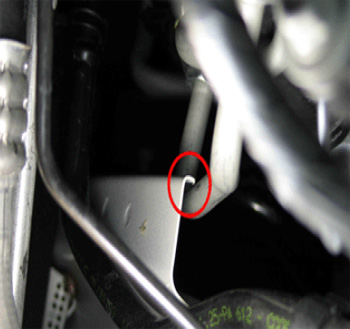Models:
2010 Buick Allure/LaCrosse
Condition/Concern:
There may be a whine and or growl noise from the engine compartment accompanied by a vibration during various driving conditions.
 This may include vehicle acceleration/deceleration, steering input and cornering left.
This may include vehicle acceleration/deceleration, steering input and cornering left.
It may be mistaken as a transmission noise or power steering pump concern.
Recommendation/Instructions:
There are two identified areas that technicians should inspect the power steering lines for a ground out condition. The first area to inspect is the frame/bulkhead on the passenger side rear of engine compartment.
It’s easier to raise the vehicle and look from underneath. Also inspect the aluminum power steering lines, making sure you have 1” of clearance between the lines and right frame rail.
(See Figure 1.)
If the condition is present, the lines should be loosened (banjo bolt below rear cylinder head) and repositioned away from any body parts. This procedure normally requires you to lift the vehicle to gain access to the banjo bolt. If you move the lines to gain more clearance, make sure you don’t move them too far, as you will cause a ground out of the aluminum lines to the rubber power steering reservoir lines.
Important: You will need to replace the banjo bolt washers (P/N 13305013) anytime you loosen the banjo bolt, as they are a one-time compression washer.
Courtesy of Identifix.













